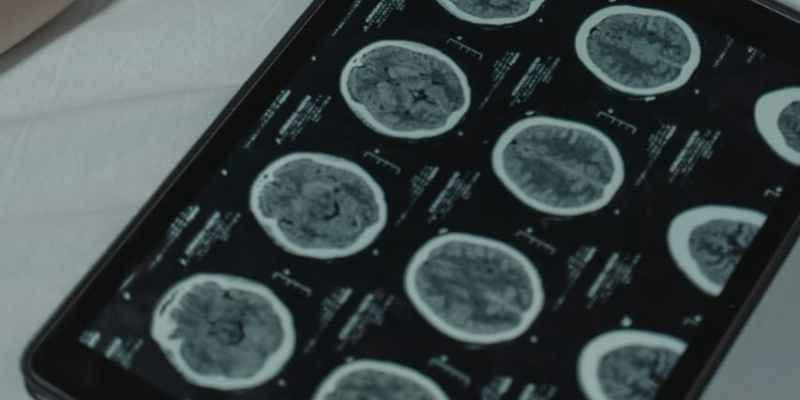Advertisement
Hemangioblastoma is a benign and slow-growing tumor of the vessels with abnormal neoplastic growth of the vascular cells. As the name of the cancer indicates, it is highly vascular. It is not metastatic and can be effectively treated if diagnosed early. However, owing to its complex location, it is vital to address its symptoms promptly and treat it effectively.

Hemangioblastoma is usually associated with the central nervous system. These vascular tumors arise in the central nervous system and cause symptoms. The most common locations where a hemangioblastoma can be present are:
As hemangioblastoma usually occurs in the central nervous system, the symptoms presented in this situation are CNS-related. Some of the most common symptoms which are reported are:
These symptoms must never be taken lightly and need immediate care and attention. Any delay may result in the advancement of the disease and ultimate complications.
The accurate causes of hemangioblastoma, like any other tumor, are neither known exactly nor can be explained precisely. However, owing to several researches, some causes have been deduced, which are as follows:
The histopathological analysis of the tumor indicates mainly two types of cells. These cells are:
In tumors that have a predominantly cystic nature, there is the presence of large fluid-filled spaces. However, the vascular component of the hemangioblastoma remains the same in cystic tumors.
As hemangioblastoma usually occurs in susceptible locations of the central nervous system, it can lead to various complications even after the surgery. These complications are:
Like most tumors, hemangioblastoma requires precise equipment and diagnostic tools to halt the progress of the cancer at a very early stage to reduce the chances of mortality. In this case, several diagnostic tests which can be used are:
History and Examination:
A history should be taken regarding disease in any other family member to rule out the genetic causes. The nature and time of appearance of symptoms should also be carefully noted. A detailed examination should be done to check for any lumps, etc.
Genetic testing:
As most of the cases of hemangioblastoma are caused by Von-Hippel Lindau (VHL) syndrome, genetic testing is crucial to highlight the causative factor for hemangioblastoma.
Erythropoietin test:
In many cases of hemangioblastoma, there is an increase in erythropoietin levels, as hemangioblastomas are vascular tumors.
ESR:
ESR is not raised in most hemangioblastoma cases, indicating the absence of any infection in the body and alarming that the symptoms may be related to an underlying pathology.
CT- Scan:
A CT- Scan can be done to diagnose a hemangioblastoma in case of an emergency or unavailability of an MRI.
Magnetic Resonance Imaging (MRI):
To provide a precise and more accurate diagnosis, MRI is always the first choice to visually analyze the tumor and surrounding tissue to prevent complications in surgery. An MRI provides a clear picture of the extent of the disease and its severity.
Angiography:
As hemangioblastoma is a vascular tumor, angiography can also be done if the information from the MRI is not adequate or there is a risk of complications.
Tumor markers:
Several tumor markers can be used, including the markers for the VHL gene mutations, to diagnose and manage the tumor effectively.

As with all tumors, the treatment options for hemangioblastoma include:
Surgery is done to remove the cancer and is practical and possible in most of the cases. The complete elimination of the tumor must be ensured to avoid any chance of relapse. It is the most effective treatment method for hemangioblastoma.
Radiotherapy is done in cases where surgery is not possible or additional treatment is needed first to reduce the size of the tumor.
Cryotherapy is done mainly in the case of hemangioblastoma in the eye. Laser can treat the delicate vessels of the eye and retina.
Supportive treatment like psychological support, pain management, and light exercise should be provided.
Being a benign tumor, the survival rate of a hemangioblastoma after surgery is done is promising. Hemangioblastoma can have a good prognosis depending upon the stage at which it is diagnosed. The 5-year survival rate for a hemangioblastoma after surgery is 90.3%.
Hemangioblastoma, although benign, can lead to severe outcomes if not treated promptly. It is vital to handle any alarming symptoms with great attention to manage the tumor effectively and prevent any fatal results.
Advertisement

By Celia Shatzman/Nov 14, 2024

By Gabrielle Bennett /Mar 16, 2025

By Tessa Rodriguez/Mar 01, 2025

By Isabella Moss/Mar 18, 2025

By Georgia Vincent/Dec 28, 2024

By Juliana Daniel/Mar 01, 2025

By Isabella Moss/Nov 14, 2024

By Sid Leonard/Nov 13, 2024

By Korin Kashtan/Nov 13, 2024

By Vicky Louisa/Dec 28, 2024

By Juliana Daniel/Mar 01, 2025

By Noa Ensign/Jan 13, 2025